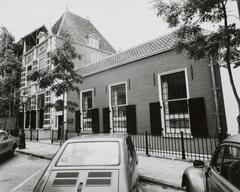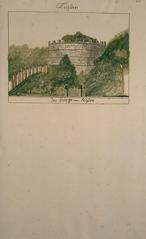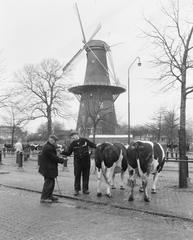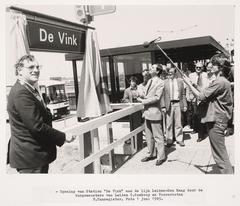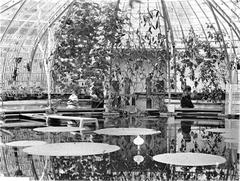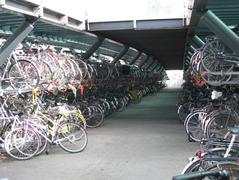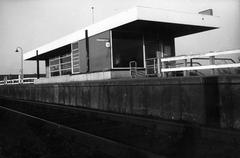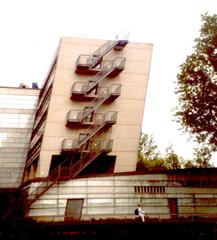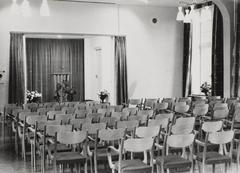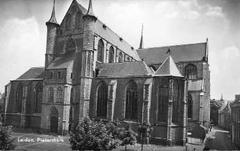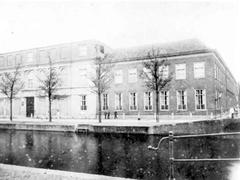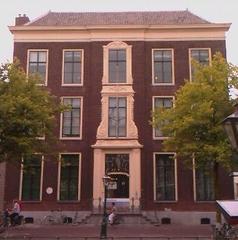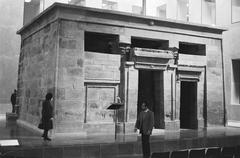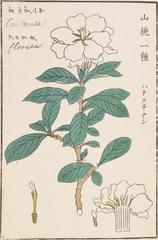
Neksluisbrug: Visiting Hours, Tickets, and Ultimate Guide to Leiden’s Historical Bridge
Date: 04/07/2025
Introduction
Neksluisbrug, located in the picturesque city of Leiden, Netherlands, is a remarkable example of Dutch hydraulic engineering and a symbol of the city’s enduring relationship with its waterways. Spanning the Vliet canal near Leiden’s historic center, this iconic bridge is much more than a means of crossing; it is a living monument reflecting centuries of water management, commerce, and cultural heritage. Originating in the 16th century as a combined bridge and lock system, Neksluisbrug was crucial in regulating water levels, safeguarding Leiden from flooding, and facilitating the movement of goods during the city’s textile trade boom. Today, Neksluisbrug remains a freely accessible, functional monument, offering panoramic views of Leiden’s scenic canals and serving as a gateway to nearby attractions. Whether you’re an enthusiast of Dutch engineering, urban history, or simply a traveler seeking tranquil canal-side vistas, Neksluisbrug is a must-see landmark in Leiden.
For an in-depth exploration of Neksluisbrug’s history, cultural importance, and visitor information, see resources like Travel Life Balance, Schuttevaer, and Ostrich Trails.
Table of Contents
- Introduction
- Origins and Historical Context
- Leiden’s Canal Network and Urban Development
- Architectural Features and Engineering Innovations
- Neksluisbrug in Leiden’s History and Culture
- Visiting Neksluisbrug: Hours, Tickets, and Accessibility
- Practical Tips and Nearby Attractions
- Frequently Asked Questions (FAQ)
- Conclusion and Final Travel Recommendations
- References
Origins and Historical Context
Neksluisbrug’s story is intimately tied to Leiden’s centuries-old mastery of water management. Constructed in the 16th century to address the city’s vulnerability to flooding, the bridge formed part of a lock system on the Vliet canal—vital for regulating water levels and facilitating trade. The name “Neksluisbrug” references the “Neksluis” (Neck Lock), which managed canal traffic and water flow, a critical function in a city largely below sea level (Schuttevaer). The lock and bridge were central to Leiden’s economic expansion, especially during its rise as a textile hub.
Leiden’s Canal Network and Urban Development
Leiden’s canal system, dating back to the Middle Ages, was designed for defense, drainage, and transportation. By the 17th century, expanded canals and bridges like Neksluisbrug supported increasing boat traffic and industrial activity (Act of Traveling). These waterways connected neighborhoods and enabled the movement of goods, making bridges integral to the city’s infrastructure and urban growth (Mapcarta).
Architectural Features and Engineering Innovations
Neksluisbrug exemplifies the robust yet elegant design of Dutch canal bridges. Built from brick and stone with iron or wooden railings, the bridge accommodates both pedestrian and bicycle traffic. Its lock system, integrated from the start, was essential for controlling water levels and ensuring navigability—demonstrating Dutch ingenuity in hydraulic engineering (Wikipedia: History of Construction). The widened lock chamber allowed ships to wait comfortably while being processed, reducing congestion on the Vliet canal.
Neksluisbrug in Leiden’s History and Culture
The bridge has witnessed pivotal moments in Dutch history. During the Siege of Leiden in 1574, the Watergeuzen (Sea Beggars) famously entered the city via Neksluisbrug, a decisive event in the fight for Dutch independence (Ginkgo). In peacetime, the bridge became a vital link between neighborhoods and a gathering place for local festivals, such as the annual Relief of Leiden celebration. Its proximity to attractions like the Rijksmuseum van Oudheden and Samuel de Zee’s hofje further enhances its cultural significance (Mapcarta).
Visiting Neksluisbrug: Hours, Tickets, and Accessibility
- Visiting Hours: Neksluisbrug is a public bridge, accessible 24/7, year-round.
- Tickets: There is no entrance fee; the bridge is free to visit.
- Accessibility: The bridge is pedestrian- and bicycle-friendly. Ramps and level approaches make it accessible for wheelchairs and strollers, though adjacent cobblestone areas may require care (Ostrich Trails).
- Peak Boating Season: From April to October, the bridge opens multiple times daily for boat passage. This may cause short delays but provides an authentic canal experience.
- Getting There: From Leiden Centraal Station, Neksluisbrug is a 15–20 minute walk or a 7-minute bike ride. The area is well-signposted and accessible by local buses (Tourist Places Guide).
Practical Tips and Nearby Attractions
Best Time to Visit:
Spring and summer offer mild weather and vibrant canal activity, while early mornings and late afternoons are ideal for photography.
Safety and Etiquette:
Leiden is safe and well-patrolled. Cyclists have priority on bridges—stay clear of bike lanes, and never cross when the bridge is opening for boats. Surfaces may be slippery when wet; wear appropriate footwear (MobiDoctor Travel Tips 2025).
Facilities:
There are no dedicated facilities on the bridge. Nearby cafés, shops, and public restrooms can be found in surrounding neighborhoods and city parks.
Integration with Sightseeing:
Neksluisbrug is part of the Singelpark walking route, a 6.5 km green corridor encircling Leiden, featuring new bridges, parks, and public art (Leiden International Centre). Other nearby landmarks include:
- Hortus Botanicus Leiden
- Museum De Lakenhal
- Koornbrug
- Zijlpoort Gate
- Polderpark Cronesteyn
Photography:
Capture the bridge at sunrise or sunset for the best lighting and canal reflections. Share your photos with #Leiden and #Neksluisbrug (Visit Leiden Highlights).
Frequently Asked Questions (FAQ)
Q: Are tickets required to visit Neksluisbrug?
A: No, Neksluisbrug is a public bridge with free access at all times.
Q: What are Neksluisbrug’s visiting hours?
A: The bridge is open 24/7, year-round.
Q: Is Neksluisbrug wheelchair accessible?
A: Yes, ramps and level surfaces ensure accessibility, but some nearby paths are cobbled.
Q: Are guided tours available?
A: Yes, Neksluisbrug is featured in several walking and cycling tours of Leiden.
Q: Are there restrooms or food options at the bridge?
A: No, but cafés, restaurants, and public toilets are nearby.
Conclusion and Final Travel Recommendations
Neksluisbrug stands as a testament to Leiden’s resilience, engineering prowess, and living history. Freely accessible and centrally located, it is an essential stop for anyone exploring Leiden’s canal heritage. Include Neksluisbrug in your walking or cycling itinerary, enjoy its tranquil views, and delve into the rich stories of the city’s waterways. For more travel insights, guided tours, and updates on Leiden’s heritage sites, download the Audiala app and follow our social channels.
Embrace the opportunity to walk across Neksluisbrug and connect with Leiden’s unique blend of history, innovation, and urban charm.
References
- Travel Life Balance
- Schuttevaer
- Ostrich Trails
- Mapcarta
- OneDayHit
- Wikipedia: History of Construction
- Leiden International Centre
- MobiDoctor Travel Tips 2025
- Tourist Places Guide
- Visit Leiden Highlights
- Ginkgo
- Holland Beyond
- Nova on the Road
- Erfgoed Leiden
- SoloSophie
- DutchReview
- Allevents.in
- Visit Leiden
- Government of the Netherlands


